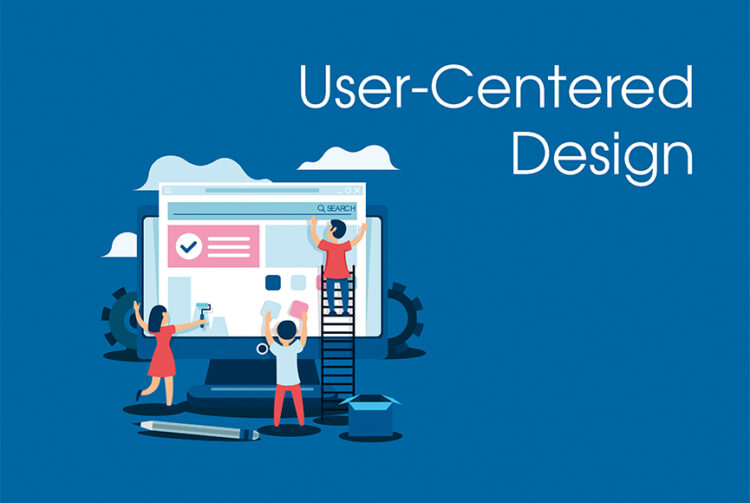The homepage is arguably one of the most important pages on your website. Most direct visits to your website usually start from the homepage. Your homepage is also often used as the target URL in your marketing campaigns.
As the page where your users can get the general information on what your website offers, your homepage has tremendous potential to engage customers. Therefore, it is important to pay attention to what you put on there.
In this article, we will take a look at what makes a great homepage and share some tips and tricks to ensure your homepage’s effectiveness.
Page Contents
1. Clear Business Objectives

Source: businessfirstfamily.com
Stating your business objectives is an essential part of introducing your website to your audience. It is related to your value proposition which is a statement that answers the question of why your audience should care about your website and business in general.
Your business objectives should contain several points, including why your business exists, what value your audience can get from your business, and why your audience should use your products or services.
Try to summarize your business objectives and don’t over-explain them. Nobody wants to read a four-paragraph explanation of your business on the homepage. It would be better to make them short and interesting to help your audience remember your brand more easily.
Some brainstorming with your team and thorough research can help you get the general idea of the best approach to including your business objectives. For example, you can check out Hostinger’s or Aquamarine’s websites as a reference on how to incorporate a business objective into your homepage.
Navigation or the main menus available on your website’s homepage is how your visitors will explore your website content. Therefore, it is vital to make the navigation intuitive and straightforward.
When you cram too many items on your navigation bar, users might feel overwhelmed and find it difficult to find what they are looking for. This will lead to higher bounce rates for your website, and your business will potentially lose a lot of customers.
The best approach to creating your website’s navigation is to make a detailed plan. Identify which pages are the most important and need to be included on the main menu. Design your menu to be as simple as possible and use clear labels for every item to help users navigate your website easily.
3. User-Focused Design

Source: drudesk.com
Every element of your website should revolve around users’ experiences and characteristics. When you apply users’ preferences to your homepage design, your marketing efforts will be more effective.
Use color palettes, fonts, and design styles that identify your target audience’s demographics. When you successfully incorporate your audience’s characteristics into your homepage’s design, they are more likely to appreciate what you offer to them.
One way to fully understand your target audience’s characteristics is by using website analytical tools such as Google Analytics. This tool provides data about your users and their behaviors, including their origins, language, and demographics.
If you haven’t built your website yet, many social media platforms, such as Instagram and Facebook, also have their own analytics tools. They work the same as Google Analytics, except that they are based on your social media data like total followers, impressions, and content interactions.
Along the way, you might need to do some evaluations by asking for feedback from the users to fulfill their preferences better.
4. Effective Copywriting
Copywriting is content intended to promote your product to potential customers. A good copy can help your brand attract more customers through engaging and relatable remarks or jargon.
There are several characteristics of good copywriting. First, it needs to be well-structured, meaning that it flows in a logical sequence. The words need to make a clear point from the beginning to ensure their effectiveness.
Practicing good SEO strategies when writing copy is also essential. SEO will help your website appear higher in the SERPs, improving its searchability and potentially driving more traffic.
Just like your homepage design, your copy should also be relevant to your target audience. Make sure to use familiar language and wording to make your copy more engaging and relatable.
5. Purposeful Calls-to-Action

Source: marketingdoorway.com
Calls-to-action (CTA) is the directive text used in marketing campaigns to encourage a specific action. CTA helps users decide what to do when visiting your website and leads them to proceed with their research or buying process.
Approximately 70% of small businesses failed to outline a clear and straightforward CTA on their homepage and potentially lost many customers. To avoid that, your homepage needs to have a standout CTA with a powerful message.
Try to use strong and clear directive messages such as Try for free today or Subscribe to our newsletter to make sure users know what you want them to do. Designing your CTA element with contrast color and a well-placed button is also important to direct users’ attention towards it.
6. Site Readability
Do you know that users spend an average of 5.59 seconds on your website to scan its written content? If your users can’t find what they are looking for within that time, they are more likely to leave your website immediately.
Help your users to find what they need as fast as possible by presenting highly readable content on your website. Pay attention to factors such as font size, the distance between lines, text color, and sentence length to ensure the best site readability.
Once you manage your content layout by paying attention to those factors, you still need to do some tests and evaluations. Tools like Hemmingway Editor or Readable from WebFX can help you grade your written content’s readability and give you tips on how to improve them.
7. Compelling Visuals

Source: whatagreatwebsite.net
Visual elements on your website are essential to help your audience understand your content better. Content in the form of images and videos also makes your website more attractive and delivers information faster.
However, your visual content should be of the best quality to effectively achieve its intended purpose. Use relevant images and videos, then pay attention to their resolution and clarity. Make sure the user knows what you are trying to show them using this content.
Also, remember that these visual contents should look as good on mobile devices as they are on desktops.
8. Internal Linking
An internal link is a hyperlink that leads users to another page or resource within the same website. Internal links allow other pages in your website to be more accessible and help your user navigate through your website.
One tip you can apply to improve your website’s credibility is by including links to your most popular content on your homepage. This will increase interaction between pages within your website and keep users on your website longer.
9. Social Proof
Most people are more likely to trust the opinion of their peers compared to promotions from companies. When it comes to buying decisions, around 84% of people trust online reviews as much as they trust their friend’s opinion.
By including customers’ testimonials, ratings, or reviews on your homepage, you immediately give your visitors more reasons to trust your brand. It makes your business more reputable by showing that other people had positive experiences with your products or services.
10. Contact Information
Contact information is one of the most important details to include in your website business. Sometimes your customers need to get additional information that can’t be found on your website and have to contact your business representative.
Displaying contact details on your homepage makes it easier for your customers to find this information. Find out the most convenient ways for users to contact you, and include those channels on your homepage.
Create hyperlinks to your business’s social media pages, email address, and phone number. If you have a physical store or office, it might be a good idea to include the address and its Google Map integration in case your customers need to visit.
Conclusion
Your website homepage has a significant role in establishing your website’s credibility since it represents what your website has to offer. As one of the essential pages on your website, it is vital to pay attention to your homepage structure to engage your audience effectively.
In this article, we have learned about ten essential aspects of a great homepage, including:
- Clear business objectives
- Intuitive navigation
- User-focused design
- Effective copywriting
- Purposeful calls-to-action
- Site readability
- Compelling visuals
- Internal linking
- Social proof
- Contact information
Invest time and effort in thoroughly building your homepage and pay attention to the aspects above. If you follow our recommendations in this article, you will surely create a memorable and engaging homepage.





